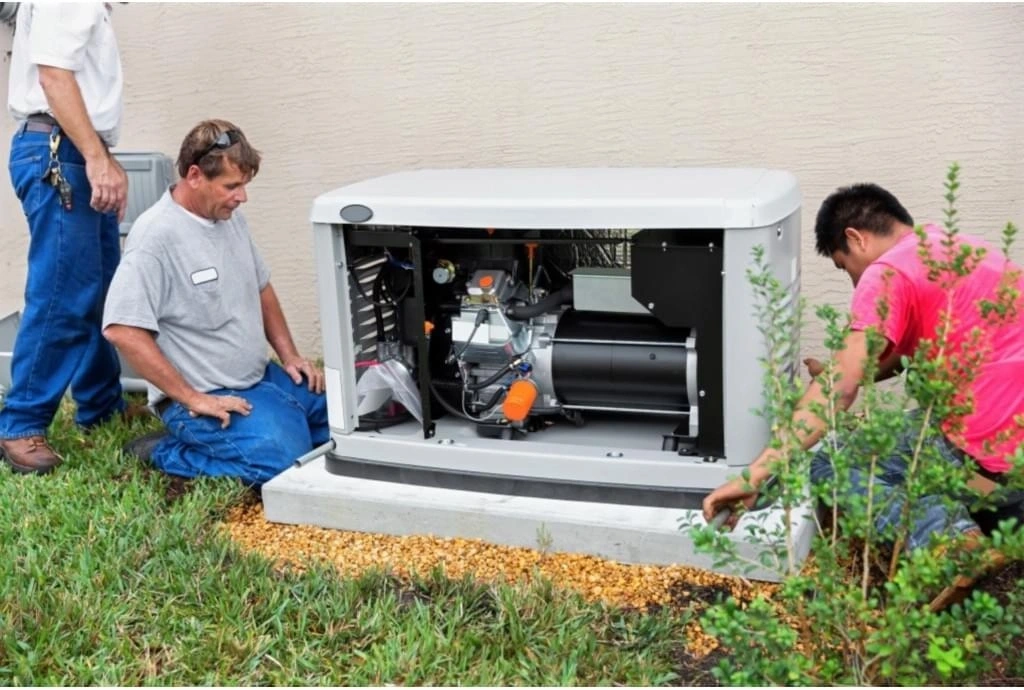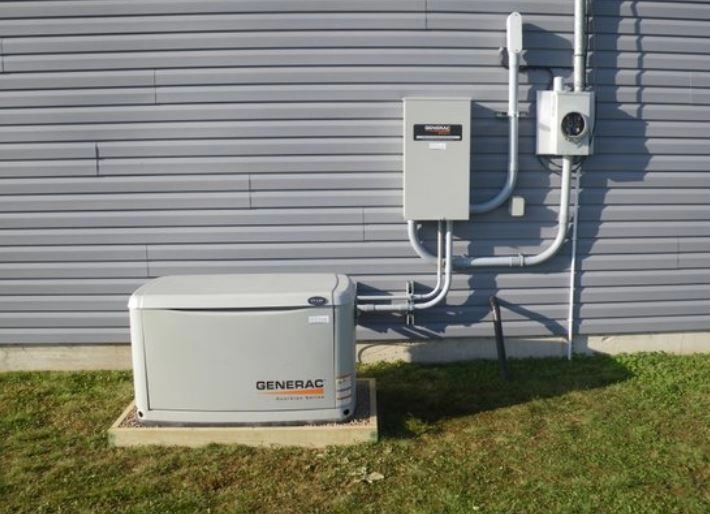Your house does not have to go dark when the power grid fails and the lights go out. For homeowners who don’t want their lives to be interrupted by power outages, whole house generators have become necessary investments. The catch is that selecting the incorrect generator size can be as costly, ineffective and uncomfortable as purchasing shoes that don’t fit.
The secret to a successful generator is to grasp one basic idea: match the capacity of your generator to the real electrical needs of your house. Purchasing the largest unit you can afford or the smallest one that looks suitable isn’t enough. It’s about identifying the ideal balance between efficiency and dependability, where your investment yields the most return without going over budget.
Understanding the Power Behind the Power: Running vs. Starting Watts

Consider the electrical system in your house as a symphony orchestra. While some instruments require a strong crescendo to begin before settling into their regular rhythm (starting watts), others play continuously throughout the performance (running watts). Comprehending this distinction is essential for appropriate generator sizing.
Running Watts: The Steady Performers
The continuous power consumption of your appliances during regular operation is measured in running watts. These are your reliable performers your laptop charging on the desk, the LED lights in your living room and your refrigerator humming softly in the kitchen. They serve as the foundation of your electrical load and draw steady power.
A standard lighting circuit may draw about 300 watts, while a typical home refrigerator may use 800 running watts. These figures quickly mount up, laying the groundwork for your power needs, which your generator must continuously meet.
Starting Watts: The Power Surge Champions
Watts, at the beginning, tells a different tale. When your air conditioner turns on, it demands power rather than kindly asking for it. It may take an astounding 9,000 watts to start that same 3,500-watt air conditioner simply to overcome the compressor motor’s inertia.
This surge is crucial, but it only lasts a few seconds. Circuit breakers tripping and systems not starting when you need them most will be frustrating if your generator is unable to meet these startup demands.
Discovering Your Appliances’ Power Appetite
Accurate generator sizing requires understanding the power personalities of each appliance in your house. Take these actions to get your detective work started:
Look at the nameplate: The electrical requirements of each appliance are displayed on a data plate or sticker. Check for voltage, amperage and wattage ratings.
Refer to the owner’s manual for more specific information on power consumption, including requirements for both starting and running.
Employ measurement instruments: Real world consumption data, which occasionally deviates from nameplate values, can be obtained using a clamp meter or plug in wattage meter.
Investigate internet databases: Detailed specifications are frequently posted on the websites of appliance manufacturers.
Calculating Your Home’s Electrical Appetite
Determining your home’s total electrical load is like creating a budget you need to account for every dollar (or in this case, every watt) to avoid coming up short when it matters most.
The Essential Load Assessment
Not every circuit in your home needs backup power. Focus on the essentials that maintain comfort, safety and basic functionality:
Life and Safety Systems:
- Refrigeration to prevent food spoilage
- Medical equipment and devices
- Security systems and smoke detectors
- Sump pumps to prevent flooding
Comfort and Convenience:
- HVAC systems for climate control
- Water heating systems
- Essential lighting circuits
- Communication devices and internet equipment
Work and Productivity:
- Home office equipment
- Computers and networking gear
- Workshop tools and equipment
The Mathematics of Power
The rubber meets the road here. Two different situations need to be handled by your generator:
The total of all running watts for devices running concurrently is known as the continuous load.
Peak Load: Any single motor driven appliance’s continuous load plus its maximum initial wattage
For instance, your generator needs at least 17,000 watts (17 kW) of capacity to safely handle both demands if your continuous load is 8,000 watts and your largest motor (central AC) needs 9,000 starting watts.
Power Consumption Reference Guide
Understanding typical appliance consumption helps create realistic estimates:
| Appliance | Running Watts | Starting Watts |
|---|---|---|
| Refrigerator/Freezer | 800 | 2,200 |
| Central AC (5-ton) | 3,500 | 9,000 |
| Electric Water Heater | 4,000 | 4,000 |
| Well Pump (1 HP) | 1,000 | 2,500 |
| Sump Pump | 750 | 1,800 |
| Microwave Oven | 1,200 | 1,200 |
| Washing Machine | 1,200 | 2,300 |
| Dishwasher | 1,800 | 1,800 |
Generator Size Categories: Finding Your Perfect Match
Generators come in various sizes, each designed to serve different home types and power requirements. Understanding these categories helps narrow your choices significantly.
Compact Powerhouses (7-12 kW)
These generators serve smaller homes and essential only applications. Perfect for:
- Homes under 1,200 square feet
- Basic needs: refrigeration, lighting, small appliances
- Budget conscious installations
- Vacation homes or cabins
A 10 kW unit typically supports essential circuits in smaller homes, keeping the lights on, food cold and basic comfort systems running.
Mid Range Workhorses (13-20 kW)
The sweet spot for many homeowners, these generators balance capacity with cost:
- Homes 1,200-2,500 square feet
- Moderate HVAC systems
- Multiple essential circuits
- Some convenience appliances
An 18 kW generator can often handle most of a medium-sized home’s needs, including partial air conditioning and several major appliances.
Full Home Champions (22-48 kW)
These powerhouses approach whole home coverage:
- Large homes over 2,500 square feet
- Full HVAC systems
- Multiple major appliances
- Luxury features and conveniences
A 22 kW unit typically provides seamless backup power for larger homes, while 26 kW and above can handle virtually any residential application.
Fuel Types: Powering Your Investment Decision
Your fuel choice affects everything from operating costs to maintenance requirements and environmental impact.
Natural Gas: The Convenient Choice
Natural gas generators connect directly to your home’s gas line, providing unlimited runtime without refueling concerns. Benefits include:
- Lower fuel costs in most areas
- Clean combustion with fewer emissions
- No fuel storage requirements
- Consistent availability
However, natural gas service can be interrupted during disasters, potentially limiting your generator’s effectiveness when you need it most.
Propane: The Independent Option
Propane generators operate from on site storage tanks, offering complete independence from utility services:
- Fuel remains stable for years
- Higher energy density than natural gas
- Complete independence from utility services
- Clean burning with minimal emissions
The trade offs include higher fuel costs per BTU and the need for periodic tank refilling or exchange.
Dual Fuel Flexibility
Some generators offer dual fuel capability, automatically switching between natural gas and propane as needed. This provides the convenience of natural gas with the reliability of stored propane backup.
Smart Features That Make a Difference
Modern generators include intelligent features that enhance reliability and user experience:
Automatic Transfer Switches: These systems detect power outages and seamlessly transition your home from utility power to generator power, often within 10 to 15 seconds.
Remote Monitoring: Smartphone apps and web portals provide real time status updates, maintenance alerts and performance data from anywhere.
Self Testing: Weekly automatic tests ensure your generator stays ready, identifying potential issues before they become problems.
Weather Resistant Enclosures: All weather cabinets protect your investment from the elements while minimizing noise.
Installation Considerations That Affect Your Choice

Your generator choice isn’t made in isolation; several installation factors influence the optimal size and type:
Electrical Service Capacity
Homes with 100-amp electrical service may require load management systems to prioritize circuits during outages. Newer homes with 200-amp service typically allow full panel backup without restrictions.
Location and Setbacks
Local codes require specific distances from windows, doors and property lines. Larger generators need more space and may affect your available installation locations.
Fuel Availability
Natural gas service isn’t available everywhere and propane tank placement has its own requirements. Your fuel options may influence your generator size choice.
Frequently Asked Questions
Q: 20 kW or 22 kW generator how to choose?
Pick 22 kW if your home’s peak load exceeds 18 kW or you want room for future needs.
Q: Can I install a generator myself?
Not recommended. Professional installation ensures safety, permits and code compliance.
Q: How often is maintenance needed?
Every 200–400 hours or once a year includes oil, filters and inspections.
Q: Does a generator add home value?
Yes, it can boost value by 3–5% and attract buyers in outage prone areas.
Q: Standby vs. portable generators?
Standby units are automatic and permanent; portable ones need manual setup.
Conclusion
Choosing the right whole house generator size is an investment in your family’s comfort, safety and peace of mind. By understanding your home’s electrical demands, comparing fuel options and considering smart features, you can select a generator that serves your needs reliably for years to come. The key is thorough planning. Take time to assess your actual power needs, not just your wants. Consider your budget not just for the initial purchase, but for installation, maintenance and fuel costs over the generator’s lifetime.
